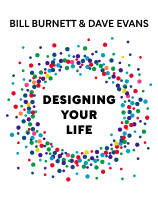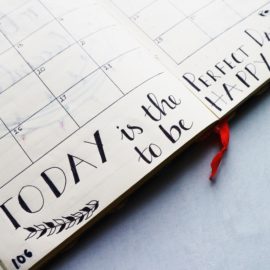

This article is an excerpt from the Shortform book guide to "Designing Your Life" by Bill Burnett and Dave Evans. Shortform has the world's best summaries and analyses of books you should be reading.
Like this article? Sign up for a free trial here .
When is the last time you took stock of your life? How could designing your life dashboard help?
You want to take a certain direction in life. But, before you can know which direction to go, you must clarify where you are right now. Designing your life dashboard can help you take stock of your life and figure out what’s working and what isn’t.
Read more to learn how to design your life dashboard and use it to find direction.
Your Life Dashboard
The first step in tackling any design problem is to articulate the problem. Good design is like a formula:
- Good Design = Correctly Identifying the Problem + Effectively Solving It
This kind of thinking is foreign to some people because it pays as much attention to the problem as the solution. But half the task of life design involves focusing on your problem, by taking stock of your life and figuring out which things in your life aren’t working the way you’d like.
Defective belief: I should already know my direction.
- Corrected belief: I can’t know my direction until I know where I am right now.
Picking the Right Problem
Your problems could relate to the type of work you do. Or they could relate to money, family, love, health, or a combination. One of your most important decisions is to choose which of your problems to work on. Choosing wrongly could make you waste many years—or even your entire life.
The experience of Dave, one of the authors of this book, illustrates the peril of choosing the wrong problem. Because Dave, as a child, loved watching Jacques Cousteau’s undersea adventures on television, and because he found his high school biology teacher to be highly engaging, he went to college thinking he wanted to be a marine biologist. But in fact, he was no good at biological science work, nor did he even like it. So he wasted two and a half years of college on it before admitting defeat. Then he changed to mechanical engineering and found happiness. He had focused on the wrong “problem” by thinking he already knew the answer to what he wanted to become, and he paid the price for it.
Cultivating a Beginner’s Mind
Dave could have saved those two and a half years by thinking like a designer. This would have led him to research what marine biologists actually do, and he would have quickly learned that he wasn’t interested in that work. In other words, he would have consciously approached the question of his college major and career choice as a beginner, with an open mind and an attitude of learning and investigation, instead of thinking he already knew what he needed to know.
Recognizing Non-Problems
Just as harmful as focusing on the wrong problem is focusing on a problem that isn’t really one at all. In the process of life design, things that aren’t actionable don’t count as problems. But people get hung up on them all the time. For example, someone who wants to be a poet agonizes over the low pay and status of poets in contemporary society. Someone who wants to be company vice president agonizes over the fact that they work for a family-owned company where for five generations only members of that family have gotten such positions.
Such people are mistaking facts for problems. Facts are like gravity: They simply exist. They’re not problems, because there’s no action you can take to “solve” them. So framing them as problems is a sure route to experiencing the frustration of wasted time, energy, and emotion.
Designers are utter realists. They know the only effective response to reality is to accept it. Then you’re free to start designing better actions and responses toward that reality.
If you’re the poet frustrated by the market for poetry (which you can’t change), keep writing your poetry for the sheer love of it, and find some other problem to work on—maybe finding another kind of writing work that does earn money. Or look for another kind of job entirely, to support your poetry avocation.
If you’re the would-be vice president who’s locked out of such roles by long-standing company practice (which you can’t change), consider switching to another company. Or embrace and enjoy the good things at your current job. Consider looking for greater value in your work instead of greater authority in a higher title. Become the best you can be at whatever level you can rise to. Earn enough pay raises to give you the money you want, regardless of whether you’re ever called a vice president.
The point is to: 1) realize when you’re up against unchanging facts, and 2) change your thinking. Reframe the problem to recognize where your real opportunities lie.
Taking Stock of Your Life
To tackle the right problem for life design, and to understand where you want to go, you need to understand where you are right now.
Designing your life dashboard starts with taking an inventory of four areas:
- Health: This encompasses your mind, body, and spirit.
- Work: This is all aspects of your contribution to human life on planet Earth, both paid and unpaid. It answers the question, “What do you do?”
- Joy: Your joy is the pleasure and refreshment you gain from doing anything that brings you happiness simply for the doing of it, like a child finger painting. It’s the pleasure you gain from playing.
- Relationships: These are your ties with family, friends, colleagues, and all of the other connections between you and other people.
Designing Your Life Dashboard
Think of these four areas as making up a “life dashboard.” Like the dashboard of a car, this one tells you how your various “systems” are functioning. It lets you know if you can get to where you’re going, and it tells you when you need to pull over for refueling or repair. Health is located at the life dashboard’s base because the other three gauges all depend on it to some extent; when your health is troubled, this negatively affects the rest of your life.
Using Your Life Dashboard
After you design your life dashboard, start using it by reflecting on your status in each of the four areas. Then indicate, on a scale from 0% to 100%, how “full” it is.
For example, imagine you’re an entrepreneur who has created a new startup. If you’re totally committed to the work, your work gauge might be nearly full. But if you’ve neglected your health and taken on too much stress, your health gauge might read low. If you’ve maintained good relationships with your family and friends, that gauge might read high. But if you’ve lost touch with leisure time and doing things for pure enjoyment, your joy gauge might read medium or low—unless your joy is bound up with your work.
To help with this self-assessment, ask yourself the following questions:
- Health:
- Physical: How is your bodily health right now?
- Mental: How sharp and mentally engaged are you?
- Spiritual: How is your general emotional health right now? Do you feel “plugged in” to a meaning bigger than yourself? If you find spiritual practices valuable, are you practicing yours?
- Work: How well is your paid work going? How is any volunteer work going? If you’re a homemaker or you take care of family members, how is that going?
- Joy: What do you do for nothing but the fun of it? How do you “play”?
- Relationships: How healthy are your family relationships? What about your friends, colleagues, pets, and community? Do you have people in your life to love, and are there people in your life who love you back?
Once you design your life dashboard and begin to use it, you start to clarify the problems that you need to address through life design. You may find that you want to revise your life dashboard occasionally, because your answers will change over time.

———End of Preview———
Like what you just read? Read the rest of the world's best book summary and analysis of Bill Burnett and Dave Evans's "Designing Your Life" at Shortform .
Here's what you'll find in our full Designing Your Life summary :
- Why finding your "true passion" in life is a myth
- The five mental attitudes in design thinking
- How to design a meaningful life in which you can truly thrive






